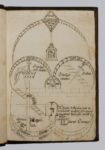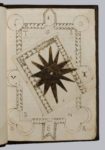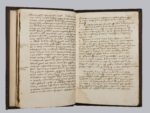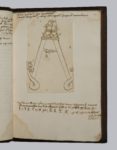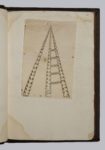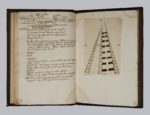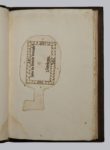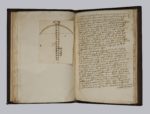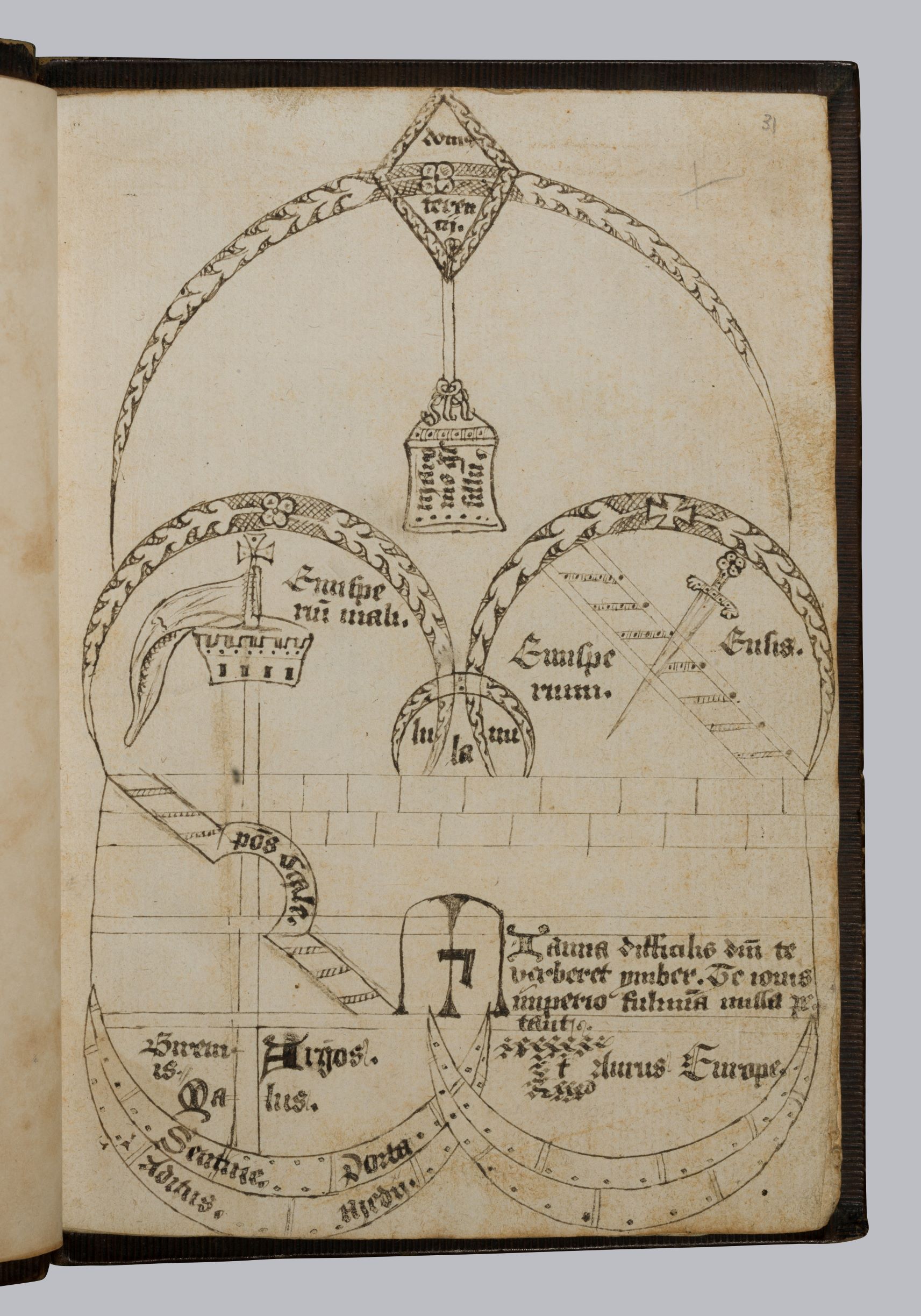
Jacobus Publicius, Ars memoriae, late 15th century [MS50D]
England
Manuscript on paper, ff. 36, with movable diagrams. Bound in brown calfskin over pasteboard with blind-tooled decoration, 19th century (16 x 22 cm)
Jacobus Publicius (active in the second half of the 15th century) was the author of the first widely printed Ars memoriae, a handbook in rhetoric and the art of memory. In addition to providing memory techniques, he used his knowledge as a trained physician to consider the medical aspects of memory training. First printed in Toulouse around 1475, his Ars memorativa also exists in twenty-eight manuscripts from circa 1460 onwards.
The book contains multiple volvelles: cut-out pieces of paper attached to the page with string so that they can be rotated. One of the images most common in printed editions of Jacobus’ text, and also the most complex, is a dial with a movable part in the form of a snake attached to its centre. While this manuscript version has instead a movable twelve-pointed star (fol. 32r), the letters of the geometric structure show it is clearly a version of the snake dial. The accompanying text explains how it works: ‘…having been rotated, divided, extended, and combined with discerning and meticulous art, they will connect letters to letters, reveal the conclusion of subject matters, and give [them] meaning’. Used with a nearby pictorial alphabet, the user connected the provided images associated with the letters on the dial to memorise a saying or phrase.
The other volvelles in the manuscript form Jacobus’ pictorial alphabet, including a compass for A (fol. 40r); a ladder for A (fol. 41r); and a lyre for B (fol. 45r).
Literature: Neil R. Ker and Alan J. Piper, Medieval Manuscripts in British Libraries, Volume IV: Paisley–York (Oxford, 1969), p. 635; Paul O. Kristeller, Iter Italicum. Accedunt Alia Itinera. A Finding List of Uncatalogued or Incompletely Catalogued Humanistic Manuscripts of the Renaissance in Italian and Other Libraries, Vol. VI (Alia Itinera II): Great Britain to Spain (London, 1989), p. 275; Sabine Heimann-Seelbach, Ars und scientia. Genese, Überlieferung und Funktionen der mnemotechnischen Traktatliteratur im 15. Jahrhundert (Tübingen, 2000), p. 117; James M. W. Willoughby, The Libraries of Collegiate Churches, Vol. 2 (London, 2013), p. 813.
Provenance: Bequest of William Moryn, 1543.
Locations: Fellows’ Library
